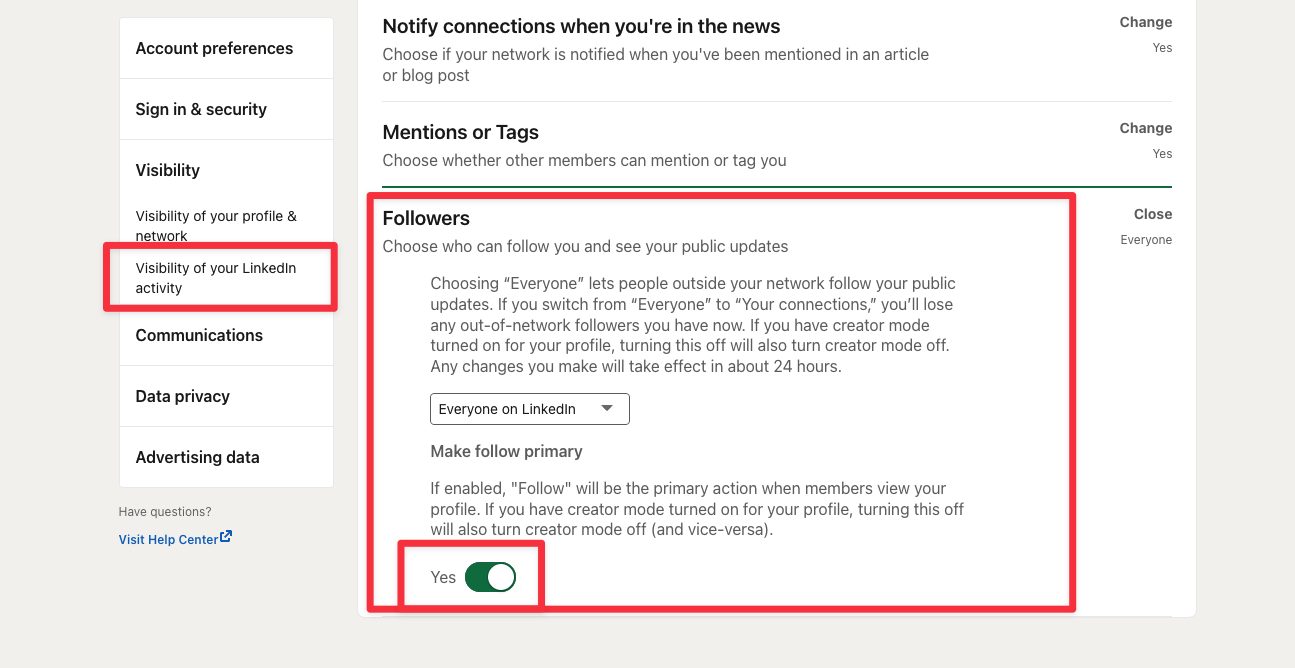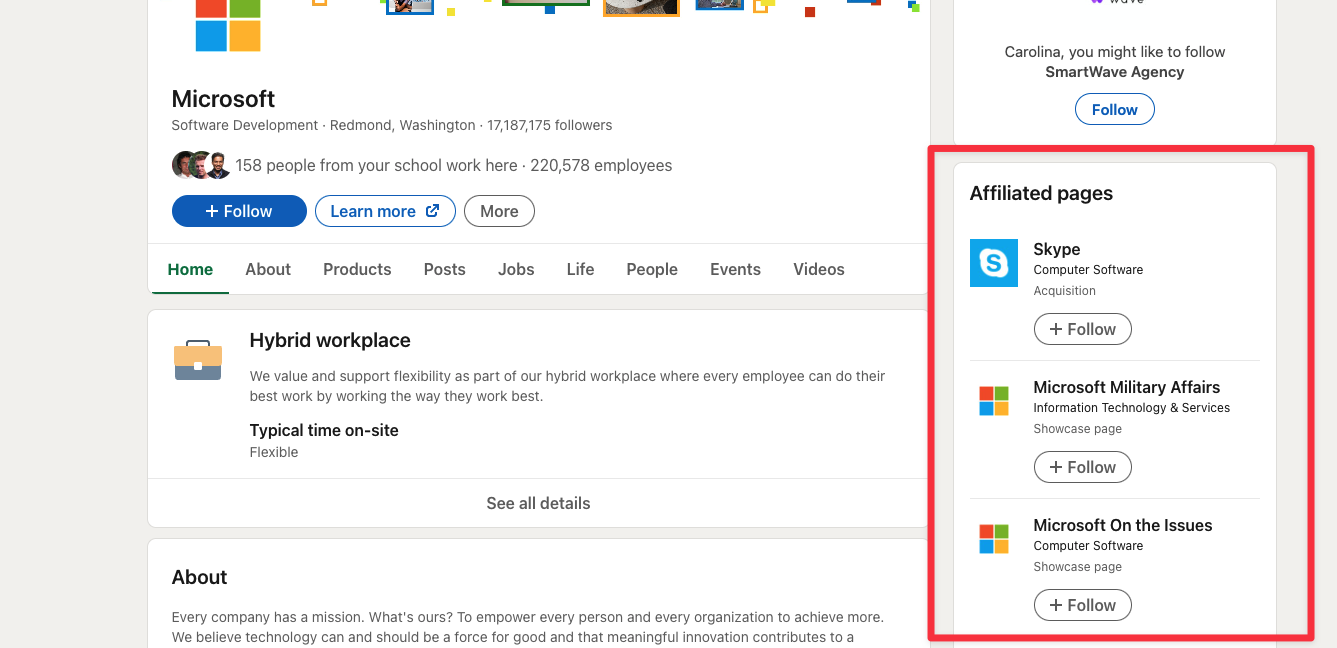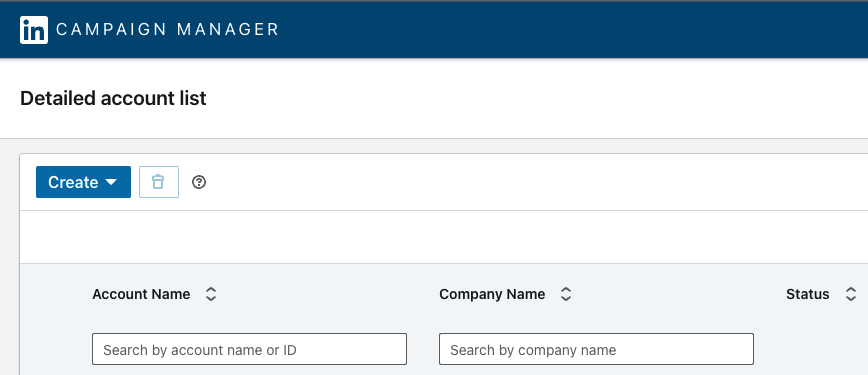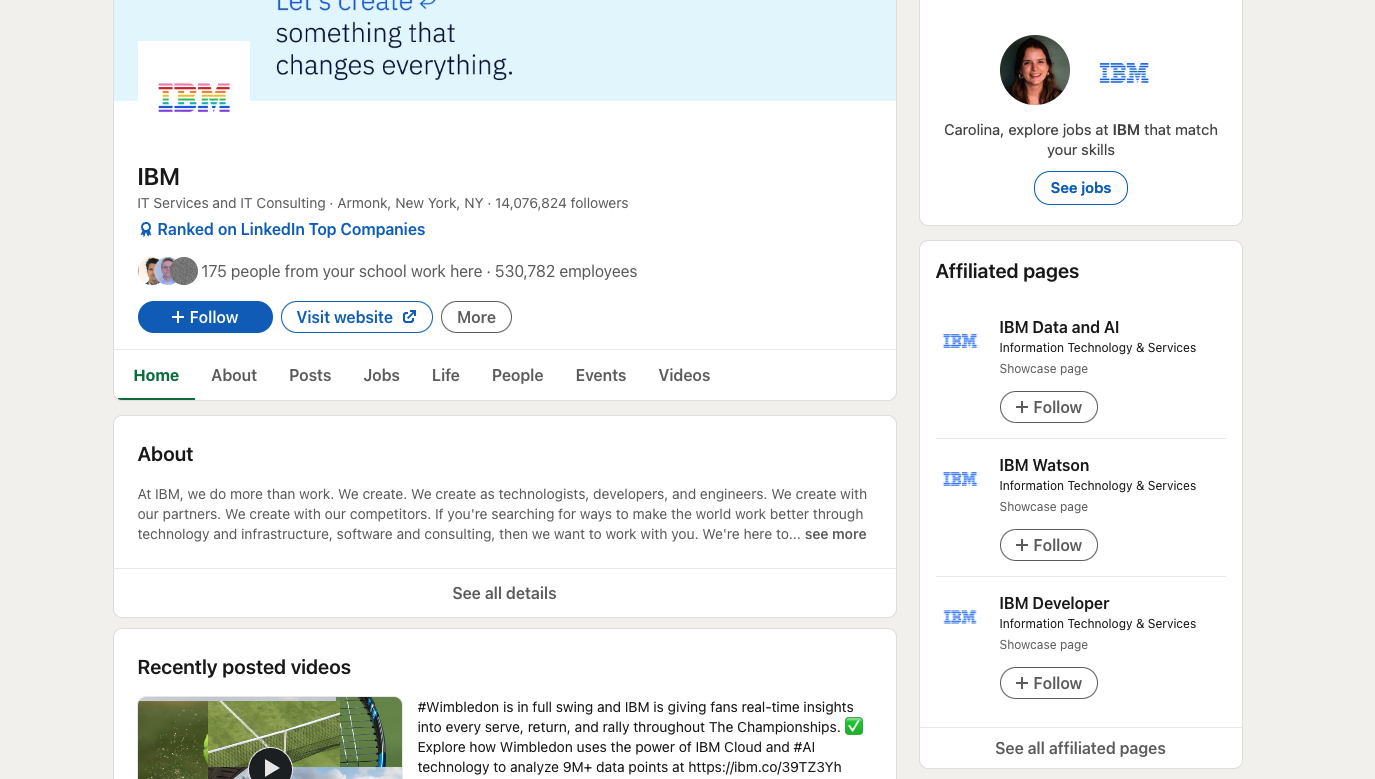Why B2C Companies Need Thought Leadership, Too
While thought leadership is often associated with B2B companies, it can be just as important for...

Are you a thought leader? Or do you want to be one? If so, then LinkedIn is the perfect platform for you. LinkedIn is full of professionals from all different industries, and many of them are looking for new insights and perspectives on the latest trends.
In this guide, we will discuss everything you need to know about using LinkedIn for business-to-business (B2B) thought leadership marketing.
We’ll define the term, explain its significance, and, most importantly, give you a robust game plan so that you can use LinkedIn to establish yourself as a thought leader in your industry.
You’re going to want to read on till the end. We’ll be sharing some important tips that people often get wrong and end up hurting themselves and their businesses.
In this complete guide, we’ll cover:
 B2B thought leadership on LinkedIn is a form of thought leadership marketing that involves using the most famous networking platform for professionals, LinkedIn, to establish yourself as an expert in their field. It’s about becoming a trusted resource in your industry and sharing helpful information that others will find useful.
B2B thought leadership on LinkedIn is a form of thought leadership marketing that involves using the most famous networking platform for professionals, LinkedIn, to establish yourself as an expert in their field. It’s about becoming a trusted resource in your industry and sharing helpful information that others will find useful.
Remember: in business, expertise and trust are inherently intertwined. People trust experts because they are trustworthy. People who are trustworthy become trustworthy by having proven knowledge and experience, or in other words: by being an expert.
Becoming a thought leader is, therefore, very important: it will provide you and your business with the most powerful differential advantage you can have – trust.
As thought leader Joe Chernov also emphasizes: “I don’t think you can gain a competitive advantage without thought leadership. The reason why thought leadership is a prerequisite is because trust is a prerequisite, and thought leadership is a way to build trust.”
As a trusted thought leader, you’ll gain:
It’s easy to see why companies have a lot to gain from becoming thought leaders. Especially in the B2B space, where 75% of the potential customers say that thought leadership helps them determine which vendor to put on their short list, the question of whether a company should leverage B2B thought leadership to grow, must actually become a question of how.
And that is what we’ll address today, now that we’ve answered what and why.

It’s not easy to become a thought leader. But, it’s not impossible - even if your competitors have a head start.
After all, you are reading this article, which proves that you are serious about taking your LinkedIn game (and ultimately your business and your professional image) to the next level. That alone puts you ahead of the curve!
That being said, let’s dive into the practical steps you can take to use LinkedIn to grow B2B thought leadership and to grow your business. We’ll be dividing them into three categories: beginner, intermediate, and advanced.
If you ever think that they’re overwhelming in quantity, just remember that the trick is to nail the fundamentals. If you follow the beginner steps and keep experimenting and learning, you will become a respected and trusted thought leader.
The steps we'll discuss are:
Beginner
1. Have a complete profileIntermediate
5. Think about you
6. Think about your audience
7. Start publishing
8. Experiment with different post formats
9. Share and add substance
Advanced
10. Showcase pages
11. Actively engage with your community
12. Post consistently
13. Make use of LinkedIn’s “Mentioned in the News” feature
14. Use paid advertising
15. Measure
These steps will help you establish a strong foundation upon which you can further build.
Start with the basics. Make sure to have a clear summary that concisely showcases who you are, what you’ve done, and where you’re going. It’s a good idea to try and show bits of your character and personality in the summary, but keep your audience in mind.
Also, include your academic and professional achievements and interests. No profile is even half complete without them. If you’re hesitant about whether to include some piece of information about yourself or your company, then that is a good sign that said information is better kept off your profile.
On that note, if you do indeed run a company, then curating a solid Company Page is a must. Your Company Page will likely be the first page that a LinkedIn member searching for your profile lands on, so stay keen on making good first impressions.
Keep your Company Page up-to-date with your newest and best thought leadership content, but keep in mind that it does not have to be exclusively about your own business. Highlighting your best collaborations and partnerships with other businesses can go a long way, especially with B2B buyers who will most likely land on your page with a single question at the forefront of their thoughts: “do I want to do business with these people?”.

This small, yet effective change can minimize noise and keep connections relevant. You can do this by going to your LinkedIn settings → Visibility → Visibility of your LinkedIn activity → Followers.
This is a simple and necessary step towards becoming a thought leader, especially on LinkedIn. Prioritize quality over quantity, especially in the B2B space, when deciding who or what to follow. This will come into play later on when you start actively engaging with these people and companies. Keep an eye out for interesting LinkedIn Groups that you may want to be an active part of.
Having a plan for the content you want to publish is very useful, especially if you’re still starting out. Writing down content ideas you want to share and setting up a schedule can help you stay focused and organized. Even if your schedule is not detailed, it will help you stay on track.
It also helps reduce the doubts you may have about as an aspiring thought leader: “What if my content sounds monotone? How can I stay coherent? What if I run out of ideas to post about? How can I avoid coming off as someone who is too active and possibly insincere?” Don’t be afraid, some imposter syndrome when starting out is perfectly normal!
On an advanced level, this becomes increasingly necessary if a company has several executives who are all active on LinkedIn. Discussing your content strategies and coordinating your efforts can lead to big returns on this small investment. This is most noticeable in the B2B space, where buyers value companies that are cohesive and coordinated.
Here are some topics worth thinking about while brainstorming:
So you’ve set up a great profile, followed some relevant peers and companies in your industry, and developed at least some idea of what you’d like to share online. You are now ready to transition from “passive observer” to “active influencer”.

Think carefully about what you can bring to the table, your unique perspective, and your key strengths. If you can identify what you can do and how you can help in your field, you will be more likely to move up in your industry and become a trusted thought leader.
This is because identifying what you can contribute helps you for two reasons:
Also, identifying how you can contribute can save you a lot of time and trouble. For example: perhaps you’re more comfortable with analyzing data than with writing articles. In such a scenario, you’d probably be better off trying to create infographics instead of long-form posts to share on your feed. Are you comfortable talking in front of a live audience? If so, then you should experiment with doing live Q&A sessions on LinkedIn Live.
Consider what your audience wants. You can create audience personas to better envision how your contributions will be perceived and what your audience needs. This will help you determine the tone, style, and content of whatever you are sharing with your network.

It’s time to put pen to paper and start sharing content with your audience!
Does it feel daunting at first? Don’t worry, remember that your current network is only a fraction of what it will grow to become. This means that for most people within your future audience, these first few posts won’t be your first impression (your profile will).
If you want to be a B2B thought leader, it is important to develop consistency early on. This will help you form good habits. If you can plan out what you will be publishing at least a month ahead, you are on the trick track.
The road toward thought leadership is riddled with trial and error. You will definitely swing and miss a couple of times when trying to become a thought leader. However, knowing that you might miss a couple of times, doesn't mean you should just post whatever looks good without thinking about it.
Instead, experiment with purpose and A/B test your different formats. If you want to find out whether long-form posts resonate with your audience better than pictures with concise captions, you should ideally experiment while controlling for other variables: create a long-form post and a picture-with-caption post about the same topic and share them with the same audience. Only then can you judge which one performed better.
A great place to begin this step would be where you left off in the brainstorming step. Experiment with posting about:
Finding out what works for you and your audience will help you minimize errors in the long run and maintain a consistent, trustworthy image.
A great way to grab the attention of some of the more influential people in your industry would be to share their content. Be sure to go a step further and add your own substantive perspective to the mix.
If you’ve nailed the beginner and intermediate steps, you’ve probably already gotten some positive attention in your domain. It’s time to capitalize on that with the following steps.

LinkedIn Showcase Pages are dedicated pages that you can use to highlight a certain brand, product, or service. Once created, they’ll be listed under ‘Affiliated Pages’ on your main LinkedIn Page. You can get fairly creative with showcase pages, but use them with care:
It’s time to go beyond liking and sharing. You should post meaningful comments on your content or on the content of other thought leaders in your field. You can even take it a step further by striving to initiate thought-provoking discussions.
In doing so, remember that the pipeline from “someone you follow” to “a connection” to “a client” is strong. This is why you should always aim for quality over quantity when considering what to engage with.
Particularly as a B2B LinkedIn thought leader, you’d rather have strong connections and frequent interactions with a small group of influencers from your field than have an abundance of connections with people who are less prominent.
Just as how thought leadership status can be achieved, it can be lost. This is why it is important to remain consistent with your posting. Long periods of inactivity can negatively impact your standing as a thought leader on LinkedIn, so stay committed to posting regularly and at least once a week.
If you can commit to a content mix of more than one format (i.e. 2x/weekly newsfeed posts with 1x/monthly long-form article or newsletter issue), that would be even better.
We already mentioned it several times, but it can help to brainstorm your topics ahead of time. This way you’re sure you always have something to post about.
We’ve written previously about how you can earn trust using LinkedIn’s “Mentioned in the News” feature. This feature can be difficult to use, but the benefits of using it, especially if you are a B2B vendor with a lot of LinkedIn connections, are clear. It is worth taking the time to learn how to use it well.

A proven way to scale your LinkedIn presence and to reach your intended audiences is through using LinkedIn’s range of advertising options alongside all the organic steps discussed earlier. LinkedIn allows you to display targeted advertisements in almost every part of the platform, from the LinkedIn Feed to the LinkedIn Inbox and beyond: Sponsored Content, Sponsored InMail, Display Ads, Dynamic Ads, etc.
To create your first LinkedIn ad, go to the LinkedIn Ads tool and click “Create Ad.” From there, you can select what type of campaign you’d like to run and set your budget. LinkedIn offers a variety of ad formats, so be sure to experiment to see what works best for you and your business goals.
Beyond LinkedIn advertising, there are numerous third-party tools and apps to expand your reach and build your network on LinkedIn, including lead generation apps and LinkedIn email finder tools.
According to LinkedIn you should prioritize engagement quality over quantity, and this is especially true for B2B thought leaders.
Measuring how successful you are on LinkedIn is not a difficult task. You can measure the impact of your thought leadership in the same way you would measure it on other channels.
Here are some KPIs to keep an eye on for LinkedIn specifically, with the first three being the most important:
That’s it! Here you had 15 steps to turn you into a B2B Thought Leader on LinkedIn. Next, we’ll discuss some extra tips and reminders, share the LinkedIn teck stack you should use, and we'll cover some real-life examples.

Now that we’ve discussed the “how”, we must dedicate some words to the question of “how not”, which is equally important, if not more. After all, we believe that brain-dead thought leadership is worse than no thought leadership at all.
This isn’t to say that failure must be avoided at all costs. On the contrary, while pursuing the path of thought leadership, you must necessarily experiment with what works and what does not for your company and industry, which makes you inevitably prone to coming across some swings and misses.
With that in mind, our goal is to help you minimize your losses when you miss and maximize your gains when you hit, which is why the following tips are so important.
This means you should consistently use correct punctuation and short and concise sentences. These little things matter because they build up over time.
This does not mean you should be writing a legal brief or corporate memo every time you leave a comment, but it does mean that you should strive to put your best foot forward even with something as seemingly simple as a comment.
As a pro-tip, always avoid “one-upping” people. For example, if a peer within your industry posts about a milestone their company has recently reached, do not comment about any of your own company’s achievements, regardless of how relevant they may be - even if they are oriented towards reaching the same social benefit. Consistent courtesy pays dividends.
It’s important to keep that in mind when interacting with others and while creating your own content.
On the topic of interacting with others, Brian Solis, Principal Analyst at Altimeter Group, says that “The key to ‘relationship economics’ on social media is no different from real-world relationships: the more you invest in terms of time, openness, value, listening, and engagement, the more likely it is that relationships will flourish… Yes, there are specific tactics companies can use on LinkedIn, but the most effective social media strategies are derived from a culture of relationship-building where the executives lead by example.”
And when it comes to creating your own content, it goes without saying that plagiarism is strictly frowned upon. Few things can just as easily tarnish your reputation or prevent you from becoming or remaining a trusted thought leader as using someone else’s ideas without giving proper credit. Even if done unintentionally, plagiarism can prove detrimental in the B2B space, as it conveys to buyers that the person plagiarizing is not up to date with the latest trends of their industry.
That is why it is extremely important, when creating your content, to thoroughly research whether the ideas you intend on sharing have already been shared by someone else. If that does turn out to be the case, then take that as an opportunity to share that person or company’s content, comment on it, and interact with those like-minded people.

Thought leadership status is never hedged in stone. The steps outlined above are not like a ladder that you can climb to reach a comfortable haven. You must always keep your profile updated and compelling, keep following new and up-and-coming individuals in your field, and connecting with prospective clients. You must also remain active and engaged within your community by sharing, posting, and taking part in the talk of the town, as discussed in this guide.
When deciding on what to create and share, we can’t emphasize how important it is to never use business jargon as a fig leaf for your thought leadership content.
Forrester Research did a study that found a lot of B2B marketing leaders do not connect their content to business value. This is because they publish content that lacks insights that buyers can use. Only 12% of those surveyed focus on publishing research and perspectives. Even fewer get help from outside experts to validate their ideas. In other words, the content being published by B2B marketers is often done in a thought leadership vacuum.
It should thus come as no surprise that Bloom Group lists relevance, practicality, clarity, and coherence as four of its eight criteria for thought-leading content.
Last, but certainly not least, you should always strive to abide by what we call the Tao of Thought Leadership. A key takeaway from Tao is that if you stay in a giving mindset, you are more likely to be respected and become a thought leader. In other words: share, share, and share!
 There are a number of different apps and software that can help you with your B2B thought leadership on LinkedIn. In order to find the right one for you, it’s important to understand what each one offers and how it can benefit your business. Here is a look at some of the most popular options currently available.
There are a number of different apps and software that can help you with your B2B thought leadership on LinkedIn. In order to find the right one for you, it’s important to understand what each one offers and how it can benefit your business. Here is a look at some of the most popular options currently available.
Some people swear by LinkedIn automation tools, others hate it. LinkedIn definitely frowns upon it. We don't recommend using any automation tools, as they can often do more harm than good. However, to make sure you have a complete picture, we'll share some of the most famous LinkedIn automation tools.
Let’s see some top-notch LinkedIn thought leaders in action. There’s a lot to be learned from them, so we highly encourage checking out their profiles and activity.
A charismatic billionaire with an itch for space travel, Branson’s life is all over the place, but he is always consistent with his LinkedIn activity. He almost entirely posts about solutions. That is his character – “Dr. Yes”. If there’s a problem that interests him, there’s a good chance he will try to fix it, and if he does try to fix it, there’s an even better chance he will post about it.
From global warming to sustainable development and to space travel, Branson’s strategy which has helped him become a particularly trustworthy LinkedIn thought leader revolves around 3 key aspects of his character:
These aspects reinforce how Branson is an active, philanthropic, and adventurous person who gives great care to his community and company. In doing so, Branson has solidified himself as a trusted thought leader, and this has helped him tremendously: how come he has been welcomed into fields he’s had little-to-no prior experience in, such as space travel and fighting diseases? The answer is simple: people trust that he will do the right thing.
IBM were pioneers in the hardware industry during the time computers were really starting to take off, but that was over 60 years ago, which is ancient in computer standards. How come they are still relevant? This largely has to do with the fact that they have always taken the “avoid complacency” rule to heart.
They did not fall back on their product’s strength – and you shouldn’t either. They invested in thought leadership – and you should too.
From their Smarter Planet initiative which generated more than $3 billion in revenue in 2 years, to their IBM Watson machine which made it to the hit TV Show Jeopardy, and to their modern thought leadership in the AI space: IBM understands the value of being a trusted thought leader in a highly competitive industry.
After launching their Cognitive Business initiative in hopes of starting “a global conversation about this new era of business and technology,” Jon Iwata, IBM’s senior VP marketing and communications explained: “This will resonate strongly with not only our current clients but (...) companies and decision makers and software developers who aren’t currently IBM clients.”
They are not just competing for clients, though. They are also competing to recruit the world’s best tech talents – and they’ve done a fairly good job at that. As of June 2022, IBM have over half a million employees world-wide.

They also take advantage of some of LinkedIn’s powerful tools, such as Showcase pages. Check out their profile and see how experts curate Showcase pages under “Affiliated Pages”.
As trusted thought leaders in many regards, IBM have proudly marketed the quote: “No one ever got fired for buying IBM.”
Striving to become a trusted LinkedIn thought leader can seem daunting at first, but it is well worth the investment, especially for B2B vendors looking to gain a competitive advantage in their fields. Plan out the first few months, stay consistent, engage with your community, and, most importantly, actively seek to help others, and you will become a thought leader in no time.
Although we focused on thought leadership, we limited our discussion in a few cases to B2B and to LinkedIn. Of course, adopting an integrated communication approach would be ideal, which is why you should not limit yourself to LinkedIn – vast as it may be. You can take advantage of other platforms as well – which is an easy thing to do when your content has already been curated. For example: Forbes Councils, which is a no-brainer for thought leadership, and Quora, which is another excellent platform for trusted professionals.

Nader is an attorney and a tech enthusiast. He loves writing and is interested in business and corporations, web 3.0, and finance. In his spare time, he enjoys performing magic and managing his temporary tattoo start-up.

While thought leadership is often associated with B2B companies, it can be just as important for...

Capterra prides itself on being “the web's leading free resource for business software help.”...
Leave a Comment